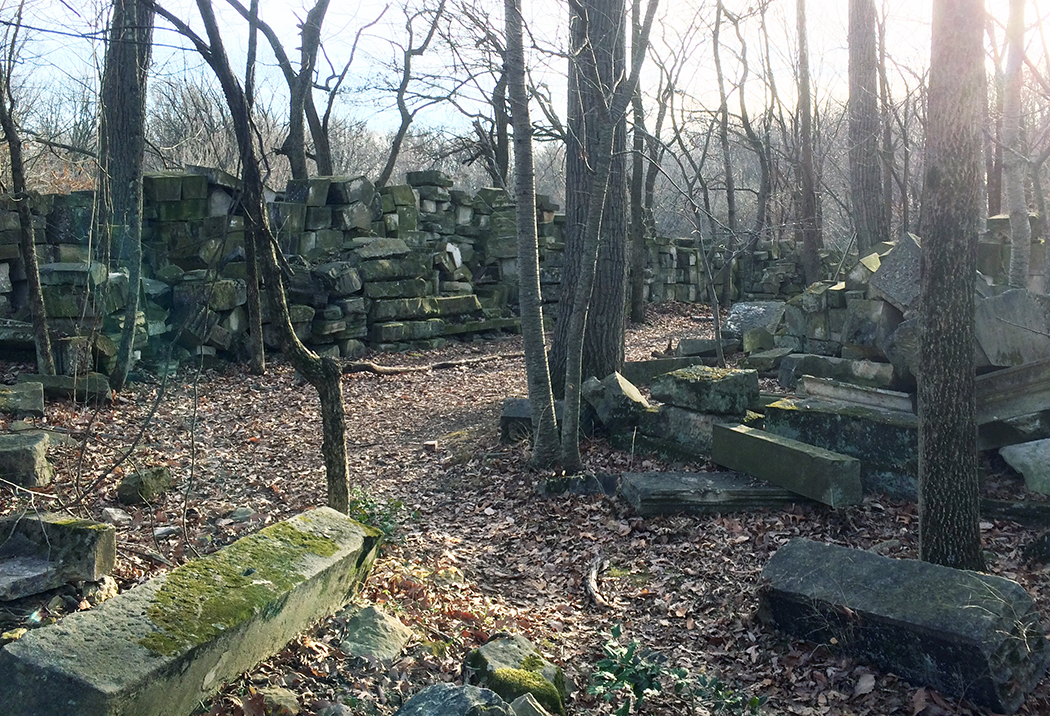By Elliot Carter
These heaps of sandstone in the heart of Rock Creek Park used to be a part of the Capitol Building. They were taken down in 1958 when the east front was expanded and rebuilt in marble. Now they've been kind of forgotten.
Conflict Over The East Front Extension Project
The Architect of the Capitol William Steward wanted to see the eastern front rebuilt in marble. The old facade was cracking, it didn't line up with the Senate and House extensions, and he thought marble was just nicer.
Steward - a former one term congressman from Delaware - had never actually received any architectural training, and he faced a huge uphill challenge convincing people this was a good idea. A bitter war played out in Washington's editorial pages over the following months between the sandstone purists and the marble backers.
Powerful Speaker of the House Sam Rayburn liked the idea. But the American Institute of Architects blasted the proposal, called it a "desecration," and labeling Rayburn as a "historic barbarian."
Rayburn pushed the plans forward in any case.
On December 13, 1958 the Daytona Beach Morning Journal wrote that "Workmen are saving everything, even the debris and rubble, and storing it safely on the Capitol grounds".
The old Aquia Creek sandstone facade was taken apart piece by piece by the John McBeath & Sons company. They finished the job in seven months, dutifully cataloging each stone and stacking them by the House of Representatives.
In their place went Special Georgia White marble, provided by the Georgia Marble Company for $2.8 million. The new front was 33 feet farther than the original, and lines up with the House and Senate stairways.
What To Do With The Stones?
According to the Washington Post, when the project started nobody had thought through what to do with the stones. "Eventual disposition of the dismantled portions is to be determined [at a later date] by the Commission for Extension of the Capitol, headed by House Speaker Sam Rayburn."
Steward and Rayburn consulted with the advisory architects who suggested donating the stones to the Smithsonian, or reconstructing them into a new museum.
However, Steward (who was being crucified in the press during all of this) had spent the last year trying to convince everyone about all the ways in which sandstone was deficient. Highlight the stones in a new museum? No way! - he wanted the blocks out of sight and out of mind.
The stones first traveled to the Capitol Powerplant, where they sat until 1975 when facilities there expanded. That is when they made their way to an NPS facility deep inside Rock Creek Park.
At the time, they were under the custody of the now-defunct Commission on the Extension of the United States Capitol. According to a 1982 Washington Post article, possession of the stones then passed to the House and Senate office building commissions.
Present Day
The stones have been sitting in Rock Creek Park for the last 40 years, slowly gathering moss and sinking into the ground.
The United States Capitol Historical Society has been cutting up a small number of the stones and selling them as bookends (with permission from the Speaker of the House). The stones are also occasionally used for small restoration jobs in the Capitol and White House.
Related: NPS vs. WMATA



